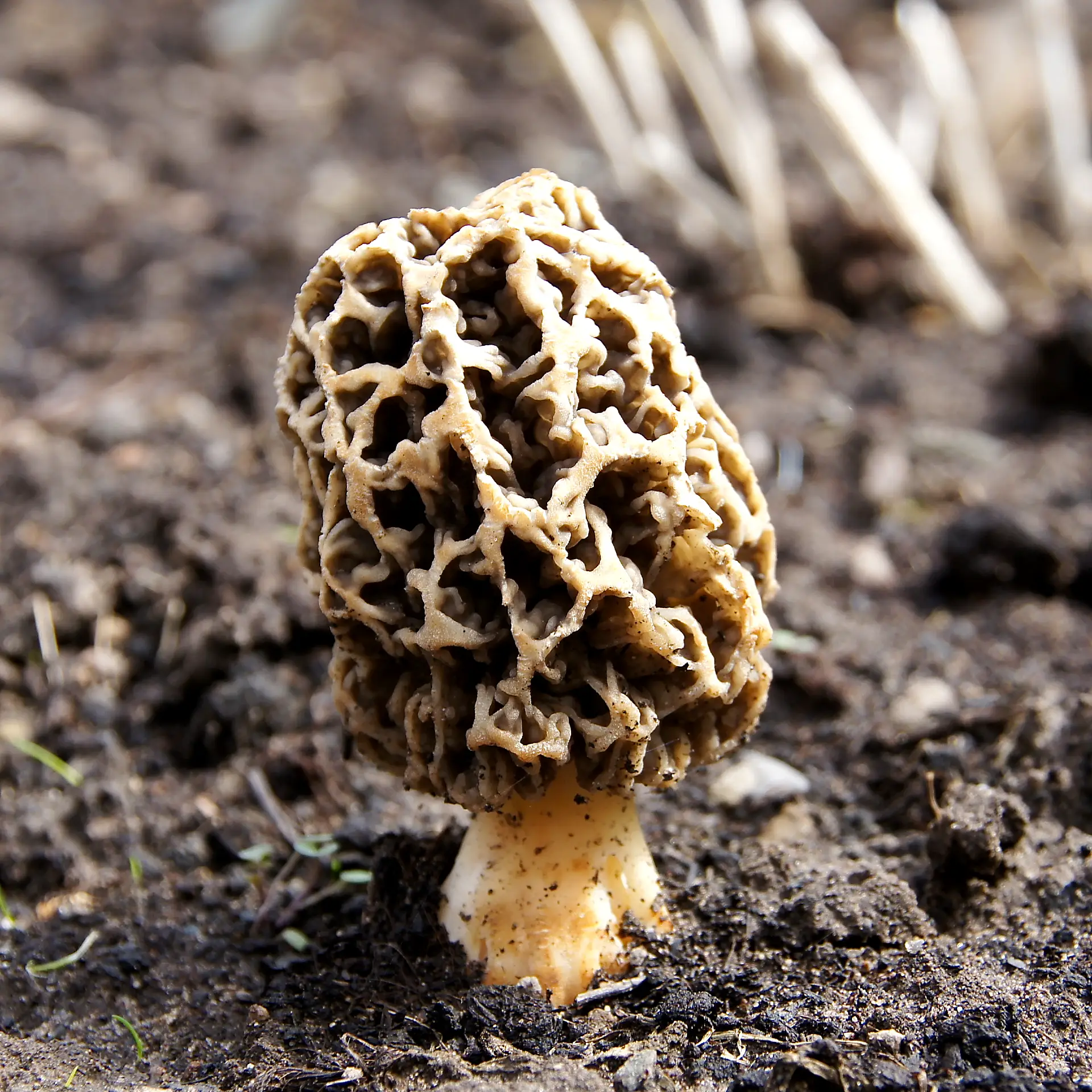Contents
CLASSIFICATION OF MORCHELLA (MOREL)
Kingdom :- Mycota
Division :- Eumycota
Sub-division :- Ascomycotina
Class :- Discomycetes
Order :- Pezizales
Family :- Helvellaceae
Genus :- Morchella
The fungal Morchella ascocarps can commonly be found in deciduous forests either in humus soil or on decaying wood, etc. In India, it is abundantly found in Kashmir and Kumaon hills. This is an edible fungus and is grown commercially.
STUDY OF VEGETATIVE STRUCTURE
- All the species are saprophytes and grow in deciduous forests on decaying wood or in humus soil. These are commonly known as morels.
- The mycelium is underground, growing a few inches deep in the soil.
- Mycelium is freely branched and the hyphae are septate. Each cell has many nuclei.
- The mycelium is woven to form a stalk and a conical pileus at the lip.
- The pileus is ridged and grooved. The grooves develop ascocarps.
ASCOCARP, ASCI AND ASCOSPORES
- The ascocarp is an apothecium, varying from 1 to 5 inches in height.
- The colour of the apothecium varies from greyish white to dark brown depending on the species and age.
- The mature ascocarp consists of a stalk, known as stipe, surmounted by a hollow conical cap called the pileus which is the fertile portion of the ascocarp. The stipe is cream coloured, thick, fleshly and hollow.
- The surface of the pileus is thrown into many strong longitudinal and transverse folds, so that it becomes coarsely pitted (i.e. with ridges and grooves).
- The ridges are the sterile areas whereas depressions are the fertile areas.
- A section of the pileus through the depression shows the hymenium with asci and paraphyses, the latter being sterile structures.
- Below the hymenium, the mycelium forms a close interwoven structure known as subhymenium.
- The asci and paraphyses in the hymenium are arranged perpendicular to the surface of depression and form a palisade-like layer.
- Each ascus is a long and cylindrical structure containing eight ascospores arranged obliquely and uniseriately.
- The ascospores are large, hyaline, oval and arranged in a single row.
IDENTIFICATION
- KINGDOM – Mycota
- Chlorophyll absent
- Reserve food glycogen
- Cell wall of fungal cellulose.
- DIVISION – Eumycota
- A definite cell wall present.
- SUB-DIVISION:- Ascomycotina
- Mycelium septate.
- Spores borne endogenously in the ascus.
- Spores in definite numbers, in multiples of two, usually eight.
- CLASS :- Discomycetes
- Ascocarp, an apothecium.
- ORDER – Pezizales
- Apothecia fleshy or leathery.
- Apothecia usually not in stroma.
- FAMILY – Helvellaceae
- Apothecia not cup shaped.
- Apothecia differentiated into stipe and pileus
- GENUS – Morchella
- Pileus costate.
- Pileus thrown into many ridges and grooves
- Sterile stipe and fertile pileus distinct.


Leave a Reply